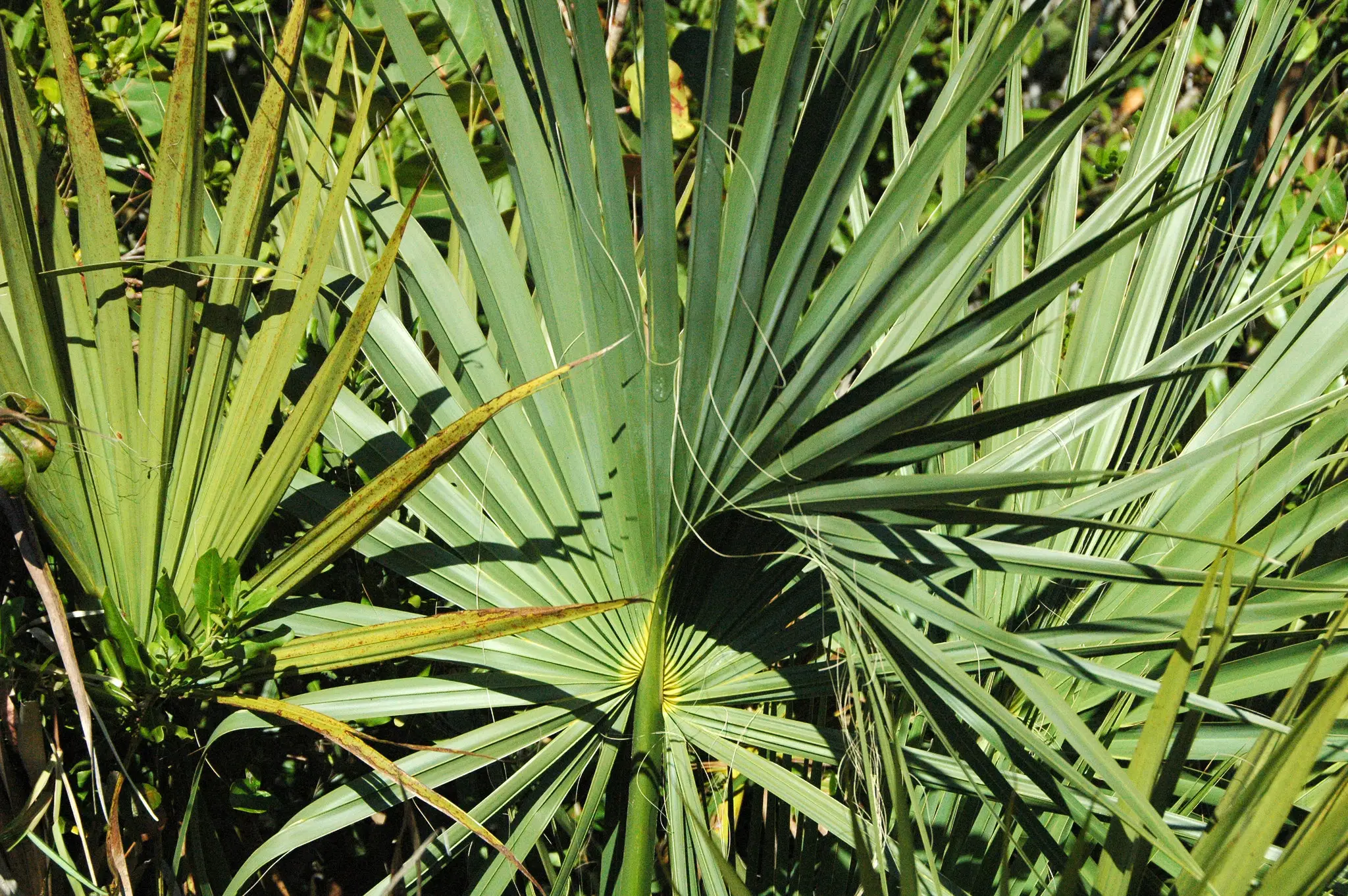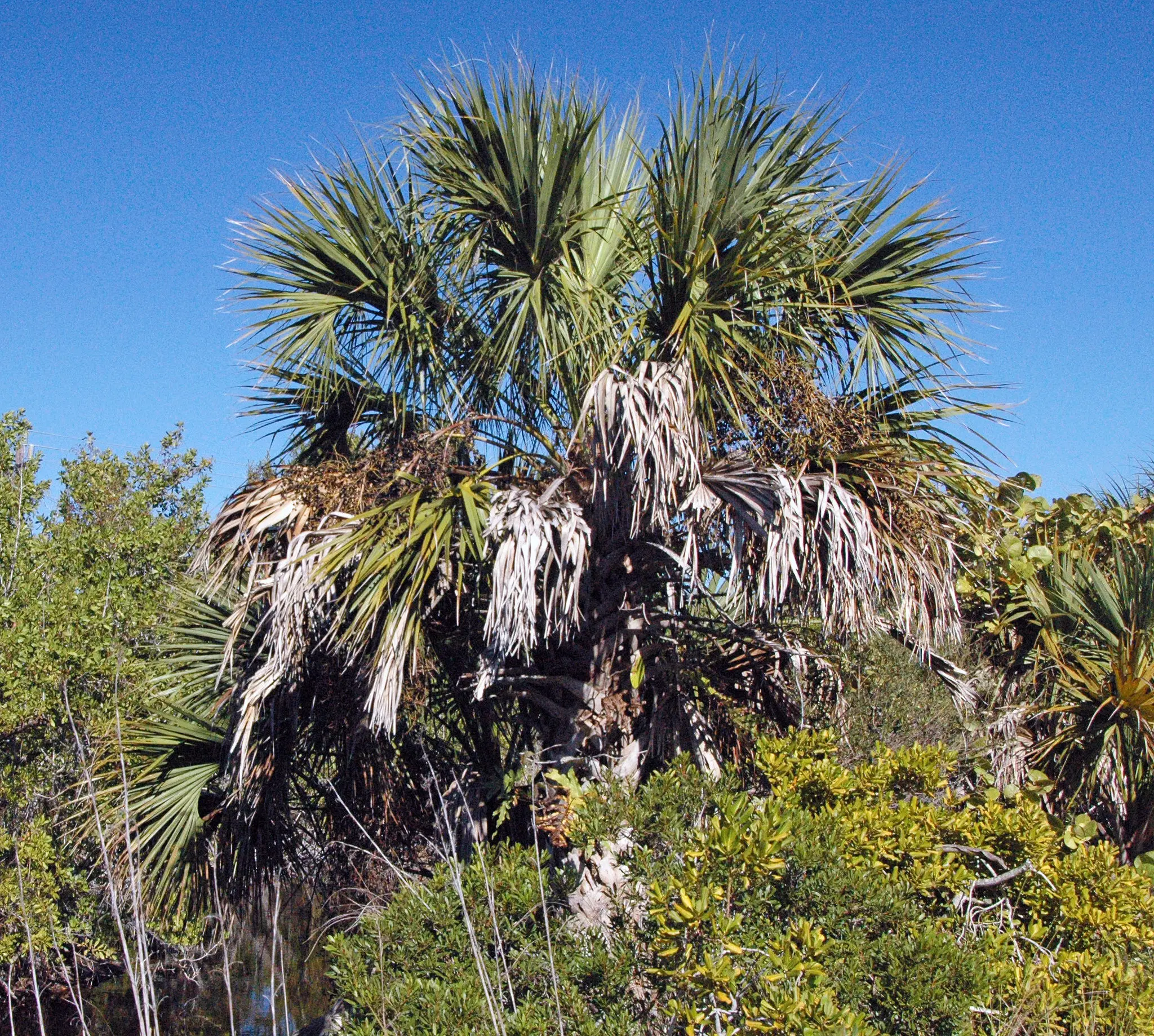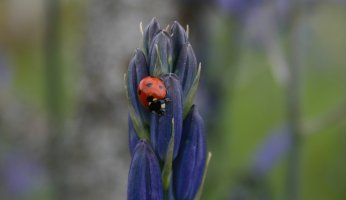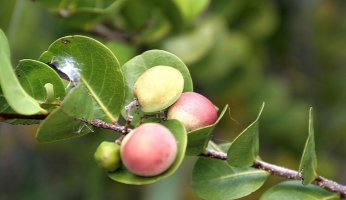Wild Edibles Profile: Cabbage Palm
 Wild Edibles Profile: Cabbage Palm
gearweare.net
Wild Edibles Profile: Cabbage Palm
gearweare.net
The cabbage palm has been known for its many uses for decades, if not centuries. Native Americans benefited from its valuable parts in building shelters and household items. After Europeans arrived with metal blades, other uses were found for the woody plant. Related to all common palms, the cabbage palm is easy to identify in its many forms.
Table of Contents
BOTANICAL PROFILE
The cabbage palm, or Sabal palmetto, starts small and grows into a bush, about eight feet tall. Although commonly referred to as a tree, it is actually a grass. As it ages, it loses its lower fronds and shoots up into a tall tree with a maximum height of 60-feet and a palm-like top. The spineless fronds abound in fanlike clusters, creating the look of feet dangling from the sides of the plant. These reach up to nine feet in length. In bloom, you will find yellowish-white flowers. When you push back the fronds, you will see fruit spikes hidden in the interior, near the trunk of the plant. The fruit spikes contain a tangle of hearty branches and dark berries and grow up to four feet long. These berries might also be referred to as beans or pods and have a very hard texture. Once processed, they are described as having a nutty flavor and have many culinary uses.
DISTRIBUTION
The cabbage palm is found across the Southwestern portion of the United States as well as some areas in the Bahamas and the Caribbean. Its reaches south of the Carolinas and is prolific in most areas of Florida, in marshes and sandy soils.
USES
The fruit harvested from the cabbage palm can be ground into a flour-like substance. However, this may prove to be a daunting task without a plan. Whole berries are a deep purple to black color and are very hard, but can be used in this form. With the help of a hammer or a food processor, you can peel away the dark outer layer to access the smaller, brownish kernel inside. A coffee or spice grinder is very useful for turning the kernel into the powder you desire without the time a labor-intensive technique like hand grinding would require. For a finer texture, put the ground beans through a grain grinder. Roasting the beans in the oven for around 30 minutes helps them to grind easier.

The heart of the cabbage palm is found in the top three feet of the tree. Peel away layer after layer of this segment, using a sharp hatchet or knife to start each strip. The heart is a long stock, a few inches in diameter that is easily sliced into smaller portions. It can be eaten raw, turned into coleslaw, or cooked. In the Florida area, the heart of palm is commonly referred to as swamp cabbage and can be found in a variety of dishes including swamp cabbage stew.
Fronds on the cabbage palm are waterproof and were used by Native Americans in the construction of shelters for that reason. The same fronds can be woven into hats, mats, baskets, and other useful items.
SEASONALITY
The cabbage palm is an evergreen plant; therefore it does not die back for the winter. The plant blooms during the summer and into the fall. Fruit starts out green in color, darkening as the season progresses.
HOW TO HARVEST
Harvest plants while they are young, before they shoot into a tall tree and become difficult and dangerous to access. When harvesting the heart of the cabbage palm, make sure that you have the proper local permits since cutting the top off the tree will kill the plant. You will need sharp pruning shears for the fruit spike branches. The stronger ones might require a saw. To top the tree, you may choose to use a chainsaw.
SUSTAINABILITY
The cabbage palm became a protected species decades ago due to overharvesting for its many uses. It has stood the test of time, development, and urban sprawl and appears to be thriving in population. Because the cabbage palm enjoys wet feet and warm temperatures, it should continue to flourish in the balmy Southeaster United States and may be subject to introduction in areas of South America or Mexico where other palms prosper.

CONCLUSIONS
The cabbage palm offers many uses from the bladelike fronds to the heart of the palm. Those who live in areas where the plant grows overwhelmingly agree that the heart of the palm has a pleasant taste. Now canned versions of the product can be found around the world. Although laborious to harvest, the fruit can also be used in recipes when ground into flour. The young leaves of the plant are also edible, offering a bit more variety to the Sunday salad.
There still seems to be some controversy as to whether the plant is protected. Although it is clear that there were restrictions on harvesting the plants that date back to the 1950’s, modern evidence is that there may not be any current laws on the books. It does seem to be controversial, however, since harvesting the heart of the cabbage palm results in the death of the plant. Some areas seem to feel that it is ubiquitous in nature, as most weeds are, and therefore there is not moral or cultural debate about whether it can be harvested.
To be safe, check with the local authorities. It’s also interesting to note that the heart of the palm can be harvested from any variety of palm tree and not just the cabbage palm. Although it’s up to you to figure out how you will chop the top off of a 65-foot tree.











